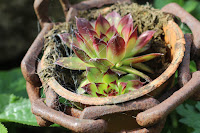Watercolour Painting: The Dos and Don'ts for Beginners and Intermediates
Watercolour painting is a beautiful and unique medium that allows for the creation of soft, ethereal, and vibrant artworks. However, it can be a challenging medium, and it's easy to make mistakes that can ruin a painting. In this blog post, we'll go over some of the dos and don'ts of watercolour painting that every beginner should know.
Do: Experiment with Watercolour Techniques
Watercolour painting offers endless possibilities when it comes to techniques, and it's essential to experiment with different techniques to find your style. Try techniques like wet-on-wet, dry brush, glazing, and salt to create unique effects. Don't be afraid to mix and match different techniques to achieve the desired effect.
Don't: Use too much Water
Water is a crucial component in watercolour painting, but too much water can lead to unwanted results. Using too much water can cause the paper to warp and the colours to bleed, leading to muddy colours and an uneven finish. It's essential to find the right balance between water and pigment to create a smooth, even finish.
Do: Use High-Quality Watercolours
Using high-quality watercolours is essential to achieving the desired results in watercolour painting. Cheap watercolours often contain fillers that can affect the colour and texture of the paint, leading to a less vibrant and less durable finish. Invest in high-quality watercolours from reputable brands to achieve the best results.
Don't: Overwork the Paint
Watercolour paint dries quickly, and it's easy to overwork the paint, leading to a loss of vibrancy and muddy colours. It's essential to apply the colours in fewer strokes and avoid reworking an area once it's dry. Overworking the paint can also cause the paper to break down, leading to an uneven finish.
Do: Practice Colour Theory
Understanding colour theory is essential in watercolour painting. Learning about primary, secondary, and tertiary colours, as well as colour harmonies, can help you create vibrant, clean colours that won't muddy. Take the time to practice mixing colours to get a feel for how they work together and experiment with different colour combinations.
Don't: Use Dirty Water
Using dirty water can lead to muddy colours and contamination of the paint. It's essential to use clean water to mix colours and clean your brush regularly. When using watercolour paint, it's best to use two cups of water - one for cleaning the brush and one for mixing colours.
Do: Paint with Confidence
Watercolour painting can be intimidating, especially for beginners and intermediates. It's essential to approach the medium with confidence and embrace the unexpected results that may occur. Don't be afraid to make mistakes - they can often lead to beautiful and unexpected outcomes.
Don't: Use Too Many Colours
Mixing too many colours together can lead to muddy colours and a loss of vibrancy. It's important to start with a limited palette and only mix colours when necessary. When mixing colours, be careful not to overwork the paint, and use clean water to avoid contamination.
Do: Use the Right Paper
Using the right paper is essential in watercolour painting. Choosing a high-quality watercolour paper that's specifically designed for watercolour painting can help achieve a smooth, even finish. It's essential to choose a paper that's the right weight and texture for your painting style.
Don't: Rush the Process
Watercolour painting requires patience and a willingness to let the paint dry before continuing. Rushing the process can lead to unwanted results and an uneven finish. It's important to take your time and allow each layer to dry fully before continuing.
Do: Embrace Mistakes
.png)


Comments
Post a Comment